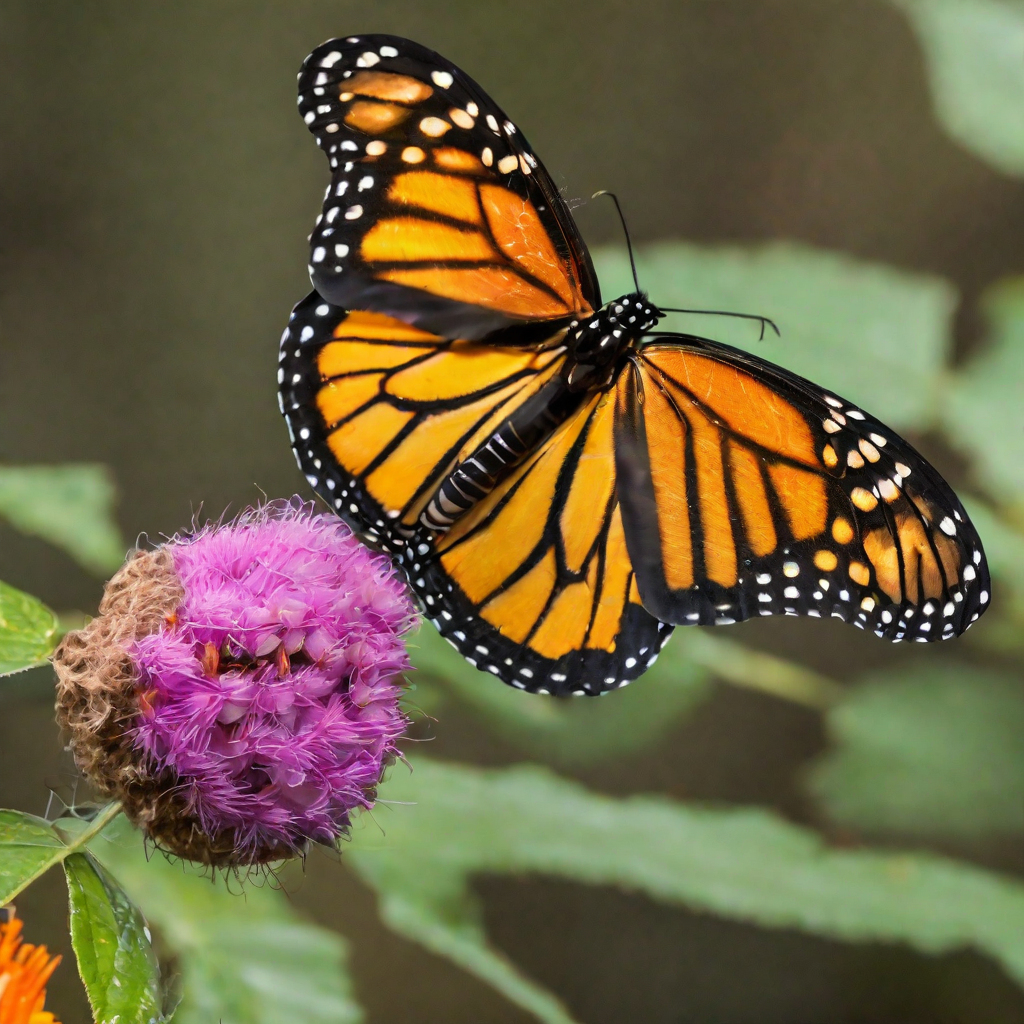Monarch Butterfly (Danaus plexippus)
The Monarch Butterfly (Danaus plexippus) is a species of milkweed butterfly that is native to North America. It is known for its striking orange and black coloration, which serves as a warning to potential predators that it is toxic.
Physical Characteristics:
* The Monarch Butterfly has a wingspan of approximately 4 inches (10 cm)
* The wings are rectangular in shape and have a distinctive black vein pattern
* The background color of the wings is orange, with black margins and veins
* The body is black and white, with white spots on the abdomen
* The antennae are black and white, with a distinctive white club-like shape at the tip
Life Cycle:
* The Monarch Butterfly undergoes a complete metamorphosis, with four distinct life stages: egg, larva, pupa, and adult
* The eggs are laid on milkweed plants, which are the only plants that Monarch caterpillars can feed on
* The caterpillars hatch from the eggs and feed on the milkweed leaves for several weeks
* When the caterpillar is fully grown, it forms a chrysalis and undergoes metamorphosis
* The adult butterfly emerges from the chrysalis and begins its reproductive cycle
Behavior and Migration:
* Monarch Butterflies are known for their annual migrations from Canada and the United States to Mexico, which can be up to 3,000 miles (4,800 km) round trip
* The butterflies migrate in large groups, following the same general path each year
* During the migration, the butterflies stop to feed on nectar-rich flowers and drink water from wetlands
* Monarchs are also known for their territorial behavior, with males defending their territories from other males
Conservation Status:
* The Monarch Butterfly is considered a species of special concern due to its declining population
* The main threats to the Monarch population include habitat loss and degradation, pesticide use, and climate change
* Conservation efforts include planting milkweed and other native flowers, reducing pesticide use, and protecting Monarch habitats
Interesting Facts:
* Monarch Butterflies are the only butterflies that migrate north and south, rather than east and west
* Monarchs have a unique relationship with milkweed, which contains toxic chemicals that are stored in the butterfly's body and make it unpalatable to predators
* Monarchs are able to survive in temperatures as low as -20°F (-29°C) and as high as 100°F (38°C)
In conclusion, the Monarch Butterfly (Danaus plexippus) is a fascinating species with distinct physical characteristics, a complex life cycle, and interesting behaviors. It is an important pollinator and a vital part of North American ecosystems, and conservation efforts are necessary to protect this species and its habitat.










